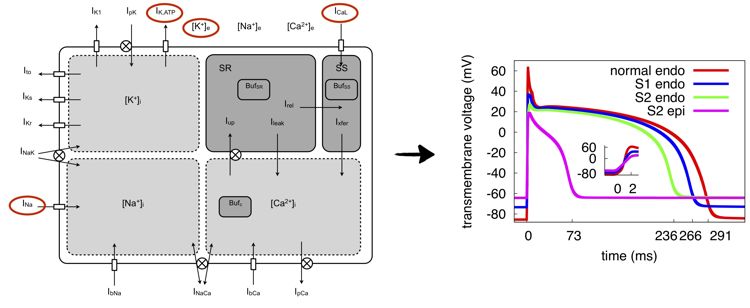Modeling and Simulating the Electrophysiological Effects of Phase 1b Ischemia
- Forschungsthema:Herzmodellierung & Simulation
- Typ:Studienarbeit
- Betreuung:
- Bearbeitung:
Studienarbeit
Modeling and Simulating the Electrophysiological Effects of Phase 1b Ischemia
Acute cardiac ischemia is one of the most common causes of death in western industrialized countries. This pathology is characterized by a deficient blood supply of the heart muscle, due to the occlusion of a coronary artery. Consequently, a shortage of nutrients and oxygen, as well as an insufficient removal of metabolic waste products, can be observed. Mainly three effects occur during the course of acute ischemia: hyperkalemia, acidosis and hypoxia. Furthermore, cardiac ischemia often leads to lethal pump failure or ventricular arrhythmias. Thus, an early diagnosis of acute ischemia using ECG measurements helps improving the patients’ outcome. Only few detailed experimental data of acute ischemia of humans is available. Therefore, detailed computer simulations investigating the impact of cardiac ischemia on the ECG are necessary.
Cardiac cell models are capable to describe electrical phenomena in the heart. Specific models have been generated to reconstruct human ventricular electrophysiology. In previous work, the effects of the first 10 minutes of cardiac ischemia were implemented and investigated in the ventricular cell model of ten Tusscher and Panfilov.
In this computer-based study, the effects of phase 1b cardiac ischemia should be integrated in the ten Tusscher ventricular model as well as examined regarding the impact on excitation propagation properties.


